- Home
- Alison Weir
Life of Elizabeth I Page 8
Life of Elizabeth I Read online
Page 8
Abroad, Catholic writers such as the English Jesuits, Nicholas Sanders and Robert Parsons and Cardinal William Allen, were the source of many of the scurrilous - and untrue - stories about Elizabeth's promiscuity.
In England, as we shall see, those who were caught spreading malicious gossip about the Queen were often punished by the authorities, for fear that ignorant people would believe and spread the rumours. As late as 1598, Edward Francis of Dorset was hauled before the justices for having said, in an attempt to persuade one Elizabeth Baylie to cohabit with him, 'that the best in England had done so, and had three bastards by noblemen of the court, and was herself base-born'.
In later years, the notorious sadist, Richard Topclyffe, who tortured prisoners in the Tower of London, boasted of having touched Elizabeth's breasts and seen her bare thighs. He was probably fantasising, although, as we shall see, on one occasion in old age, the Queen appeared to enjoy exposing her breasts to a French ambassador.
Yet Elizabeth was too much mistress of herself and too great a stateswoman to succumb to the temptations of illicit sex. She was a proud and normally dignified woman who was very conscious of her exalted status and strict about observing propriety, and it is hardly likely that she would have risked her reputation, or the possible security of her throne, for physical pleasure. There was no effective contraception in those days, and a pregnancy outside wedlock would have spelled ruin for her. The very fact that she took no pains to hide her love and admiration for certain men indicates that her relations with them were above reproach. There is no proof to support the gossip. In 1561, when the rumours were at their most rampant, Nils Guilderstern, Chancellor of Sweden, came to England to press the suit of his master, King Erik. Having observed Elizabeth at court, Guilderstern reported: 'I saw no signs of an immodest life, but I did see many signs of chastity, virginity and true modesty; so that I would stake my life itself that she is most chaste.'
This was a view that would be shared by many other ambassadors in the years to come. Most agreed that the rumours were 'but the spawn of envy and malice'. In 1571, the French envoy, de la Mothe Fenelon, informed the Queen of France that Elizabeth was 'good and virtuous', adding that the gossip could not be believed when one had experienced the ethos of the English court, where the Queen, who was watched 'with Argus eyes', both inspired and received such a degree of respect as to preclude any possibility of her being unchaste.
Another French ambassador, Michel de Castelnau, Sieur de la Mauvissiere, having been acquainted with Elizabeth for a quarter of a century, stated: 'If attempts were made falsely to accuse her of love affairs, I can say with truth that these were sheer inventions of the malicious and of the ambassadorial staffs, to put off those who would have found an alliance with her useful.' Most Spanish ambassadors were hostile to the English Queen, but one, de Silva, admitted that he was never able to find any truth in the rumours about her virtue. Elizabeth herself had told him: 'I do not live in a corner. A thousand eyes see all I do, and calumny will not fasten on me for ever.' There was no question in the minds of most of the Queen's subjects that she was inviolably chaste. Years later, the Lord Chief Justice, the brilliant Francis Bacon, described her as 'certainly good and moral; and as such she desired to appear' and his sentiments were echoed by others who knew her well, such as William Cecil and Sir Francis Walsingham, successive Secretaries of State.
The Queen's much vaunted virginity was a matter, not of personal choice, but of state policy, and in many ways it cost her dear, condemning her to a lifetime of lonely isolation, emotional deprivation and enforced chastity. She did indeed make a virtue of what she saw to be a necessity, and the strain sometimes showed. She may have teased her lovers and allowed them certain liberties - she was undoubtedly of an amorous nature - but never more than that. It may well be that the sex act itself did frighten her in some way, that she was psychologically unable to give herself to a man. But even if this were true, it did not alter the fact that she felt more invincible in the persona of the Virgin Queen than she would have done as a married sovereign. To remain invincible, she must not only bear the name but also play the part with conviction. And that meant that illicit sexual intercourse was forever strictly out of the question, whatever her private feelings about it.
Many people believed, and some still do, that because Elizabeth loved courtship and flirtation she was sexually immoral, but in fact she lived a very circumscribed life - she was hardly ever alone, being (as she said herself) 'always surrounded by my Ladies of the Bedchamber and maids of honour', who slept in her room - and she valued herself and her honour highly: it would have been unthinkable tor the Queen of England to become some man's plaything. 'My life is in the open, and I have so many witnesses,' she once said, having learned what was being said about her abroad. 'I cannot understand how so bad a judgement can have been formed of me.' She had, moreover, learned what happened to queens - and, for that matter, princesses - who were suspected of overstepping the bounds of morality, and it had been a grim lesson. Besides, while she remained unattainable, she remained in control of her relationships, and that was how she liked things to be.
Hardly anyone took Elizabeth at her word when she expressed her wish to stay single. Both Parliament and the Council would behave as if only the choice of husband was an issue, and foreign ambassadors would press the suits of their various masters with good hopes of success. Elizabeth played along with this game enthusiastically. She loved nothing better than masculine attention and flattery, and revelled in the rituals of courtship. So well did she play her part that most people were deceived into thinking that she had indeed changed her mind about remaining celibate, and that it was only a matter of time and choice before she gave herself in marriage. This view was given credence by Elizabeth's fondness for discussing her possible nuptials, or declaring that 'She was but human and not insensible to human emotions, and when it became a question of the weal of her kingdom, or it might be for other reasons, her heart and mind might change.' She became, it was said by a courtier, 'greedy of marriage proposals'. It would also prove advantageous to her to have European princes competing for her hand and England's friendship at a time when the country was weak and impoverished. While they believed they stood a chance of success, they would not think of making war or stirring up trouble.
The matter of the Queen's marriage was to dominate English political thinking and policy and provoke endless speculation for a quarter of a century, with many tortuous twists and turns along the way that would cause untold grief and anguish to Her Majesty's beleaguered advisers, most of whom were utterly perplexed by her contrary behaviour. Few, even Cecil, realised that she meant it when she said, as she did on numerous occasions, that she had no desire to marry.
A quarter of a century of queenly prevarication was initiated in February 1559, when Elizabeth received the first marriage proposal since her accesssion. De Feria at last obtained a private audience and informed the Queen of King Philip's hopes. He was disconcerted when she displayed no sense of the honour being done her, and even more so when she responded by delivering a coy speech about the virtues of remaining a virgin. Unimpressed, the ambassador retorted that, if she did not marry and produce an heir to sit on England's throne, the King of France would rise against her and place Mary Stuart there instead.
This was a red rag before a bull, and prompted a furious outburst from the Queen, in which she 'began to rave' against King Henry II, the Dauphin, Mary Stuart and the French and Scottish nations in general. So vehement was her anger that, having raged and stormed for a considerable time, she collapsed with fatigue into a chair, telling de Feria that she needed time to think about King Philip's proposal.
A few days later, she was more rational, although she did point out the objections that could be made against such a marriage. The King's marriage to her sister had placed herself and Philip within the forbidden degrees of affinity; although the Pope would hardly be likely to refuse Philip a dispensation, this would be controversi
al in England, for had not Henry VIII been so 'scrupulous' as to question the Pope's right to issue a dispensation allowing him to marry his brother's widow? An English court had declared that marriage invalid, and it was likely that the validity of a marriage between Elizabeth and her sister's widower would be similarly disputed. The Queen quoted the Book of Leviticus to de Feria to prove her point, saying that she could never accept a papal decree which contravened the Word of God. For these reasons, she went on, she could not marry her sister's husband without dishonouring her father's memory.
However, all was not lost. She would, she promised, lay the matter before Parliament and the Council, and in the meantime the ambassador could assure King Philip that, if she married at all, she would prefer to take him before all others.
For the next month she considered the matter, while de Feria grew daily more optimistic. But the Queen's councillors, when they heard of the proposal, were aghast that their mistress could even contemplate accepting it, and in heated discussions did their best to dissuade her from doing so. She assured them that she would do nothing prejudicial to England's interests: 'I am descended by father and mother of mere English blood, and not of Spain, as my late sister was,' she told them. Nevertheless, it would not be politic to turn down King Philip with unflattering haste, because England still needed Spain's friendship, especially since a peace with France had not yet been concluded. For the time being, therefore, de Feria might continue to hope for a favourable answer.
Chapter 3
'Disputes over Trifles'
Queen Elizabeth had from adolescence been imbued with the beliefs and teachings of the Cambridge reformers who tutored her, yet although she grew up in and professed the Protestant faith, she was no reformer herself; it was the traditional ritual and ceremony of religion, the glorious anthems and motets sung by her choristers, and the intellectual satisfaction of theological literature that appealed to her. She knew that literature well, informing Parliament in 1566 that 'I studied nothing but divinity till I came to the Crown.' Furthermore, in an age in which people were burned for their beliefs, she held surprisingly enlightened views. 'There is only one Jesus Christ,' she declared to one French ambassador, Andre Hurault, Sieur de Maisse. 'The rest is a dispute over trifles.'
Unlike her sister, she was no fanatic, and hated fanaticism in others, both Catholic and Protestant, just as she had little time for bishops and despised those hard-line Protestant divines who went about calling each other 'my brother in Christ'. She was not above keeping episcopal sees vacant in order to retain their revenues for the Crown.
For her, the arguments of theologians and divines were as 'ropes of sand or sea-slime leading to the Moon'. She told Parliament in 1590, 'I see many overbold with God Almighty, making too many subtle scannings of His blessed will, as lawyers do with human testaments. If I were not certain that mine were the true way to God's will, God forbid that I should live to prescribe it to you.' Early in her reign, she confided to de Feria that she 'differed very little' from Catholics in her beliefs, 'as she believed that God was in the sacrament of the Eucharist, and only dissented from three or four things in the mass'. This, however, was said at a time when she needed Spain's support. She was quite capable of denigrating the old faith, as in 1577 when she referred to it, in a letter to German Protestants, as 'the darkness and filth of popery'.
When she learned that King Philip was persecuting Protestants in the Spanish Netherlands, she wrote to ask him why it mattered to him if his subjects chose to go to the Devil in their own way. She shocked one of Philip's ambassadors by flippantly expressing her hope that she would be saved as well as the Bishop of Rome, as English Protestants called the Pope. Later in the reign, she refused to allow Sir Walter Raleigh's suspected atheism to be investigated, on the grounds that she enjoyed theological arguments with him.
Because of these attitudes, some people accused her of having no religion at all. One Spanish ambassador, de Quadra, observed: 'She is not comfortable with the Protestants, nor with the doctrines of the other side either, and gives ground for the assertion that she is an atheist.' Yet she read the Bible regularly, and at the end of her life averred, 'I have ever used to set the Last Judgement before mine eyes and go to rule as I shall be judged to answer before a higher Judge.' Her views on transubstantiation were perhaps expressed in a doggerel verse traditionally ascribed to her and first printed in Richard Baker's Chronicle in 1643:
Christ was the Word that spake it, He took the bread and brake it, And what His words did make it, That I believe and take it.
What she also believed in was the strong hand of a divine Providence, guiding and watching over her and her kingdom. When England faced the great threat from Spain in the 1580s, Elizabeth told the French ambassador, de la Mothe Fenelon, 'I think that, at the worst, God has not yet decided that England shall cease to stand where she does, or at least that God has not given the power to overthrow her to those men who would like to undertake it.'
Sermons - one of the chief features of morning services in Protestant churches - were her particular bugbear, and woe betide those clergymen who preached for more than an hour. She had even less time for those who attempted to instruct her from the pulpit as she sat in the royal closet with its lattice window, which she might have open or shut, according to her mood. 'To your text, Mr Dean! To your text!' she would shout, or she would send a message to the preacher, warning him to desist from an offending theme. In 1565, Dr Nowell, Dean of St Paul's, attacked the recent dedication of a Catholic tract to the Queen, then spoke out against the idolatrous graven images - the crucifixes -which Elizabeth had insisted upon keeping in the royal chapels.
'Do not talk about that!' snapped the Queen, but the Dean ignored her. 'Leave that!' she bawled. 'It has nothing to do with your subject, and the matter is now threadbare.'
Another preacher, Bishop Aylmer, who protested about 'the vanity of decking the body too finely', was curtly told to change the subject. 'Perchance', commented the Queen's godson Harington, 'the Bishop hath never sought Her Majesty's wardrobe, or he would have chosen another text.'
In 1596, when Elizabeth attained the age of sixty-three, known in Tudor times as the grand climacteric year, which many could not hope to survive, Bishop Rudd was informed by the Archbishop of Canterbury that Her Majesty 'now is grown weary of the vanities of wit and eloquence wherewith her youth was formerly affected, and plain sermons which come home to her heart please her the best'. The Bishop thus chose for his text the prayer, 'O teach us to number our days, that we may incline our hearts unto wisdom,' and proceeded to discourse upon significant sacred numbers such as three for the Holy Trinity, seven for the Sabbath, then seven times nine for the grand climacteric year, sixty-three. By this time, the Queen was frowning. Panicking, Dr Rudd went on to refer to the Revelatory number 666, 'with which he could prove the Pope to be Antichrist'. When he had finished, Elizabeth leaned forward in her closet and tartly commented 'that he should have kept his arithmetic for himself. I see', she added, 'that the greatest clerics are not the wisest men.'
'Queen Elizabeth', remembered Godfrey Goodman, Bishop of Gloucester under James I, always insisted 'that she had rather speak to God herself, than hear another speaking of God. She seldom heard sermons, but only in Lent.' Those summoned to preach at court were instructed to cut their address to a minimum and to choose their text from a list of those approved by the bishops. Sir John Harington records that the Queen's mind was capable of wandering during sermons. She once congratulated a divine on preaching on a matter that would have offended her greatly had she been listening to him.
Yet there were more cogent reasons for Elizabeth's dislike of sermons: preaching offered a forum for men to air their opinions, which, given the religious climate of the times, could only lead to disputes and cause public unrest. Those extreme Protestants who would come to be known as Puritans were heartily disapproved of by Elizabeth, not only for their fanaticism, but also because they insisted upon a 'preaching ministry
'. Most of her subjects applauded her stand against Puritanism, especially after 1585 when she quashed a Puritan Bill aimed at banning all sports and entertainments on Sundays. The Queen felt that her people had a right to spend their only day of rest enjoying themselves as they pleased, without interference from killjoys. She also refused to agree to the suggestion - again from a Puritan source - that heresy, adultery and blasphemy be made criminal offences. In her opinion, those things were matters of conscience, not of law.
Perhaps her most famous triumph over Puritanism came in the field of the arts. The Puritan authorities in several cities, especially London, held the theatre in especial odium, and made strenuous efforts to suppress play-going, as it drew people away from the churches. The Queen sympathised with the theatre-goers: she, too, hated sermons. When, in 1575, she discovered that the renowned Coventry cycle of mystery plays had been banned by the Puritan authorities in that city, she ordered them to be restored. The Puritans in London then began complaining that theatre-goers in the City helped to spread the plague that was endemic each summer. In 1583, the Corporation of London closed the theatres on the Surrey shore, but Elizabeth retaliated by forming her own company of players, who became known as The Queen's Men. The civic authorities backed down, but in 1597 they eventually persuaded the Council to agree to close down the theatres on the grounds that they were hotbeds of subversive propaganda against the government. When Elizabeth heard, she was furious, and the Council hastily rescinded the order. There were no further threats to the theatre in her reign.
The Queen particularly abhorred married clergy, especially bishops and archbishops. Time and again she refused to acknowledge the existence of their wives, and on several occasions she was so rude about Archbishop Matthew Parker's wife that the shocked primate 'was in horror to hear her'. In 1561 he wrote to Cecil: 'Her Majesty contmueth very evil to the state of marriage in the clergy, and if I were not therein very stiff [i.e. in his views] would utterly and openly condemn and forbid it.' She had the septuagenarian Bishop of Ely brought before the Council to be rebuked for having taken a young woman as his second wife. His excuse was that he had married to avoid being tempted into fornication, but this cut no ice with the Queen, whose views were shared by many of her subjects.

 Richard III and the Princes in the Tower
Richard III and the Princes in the Tower Britain's Royal Families: The Complete Genealogy
Britain's Royal Families: The Complete Genealogy The Lady in the Tower: The Fall of Anne Boleyn
The Lady in the Tower: The Fall of Anne Boleyn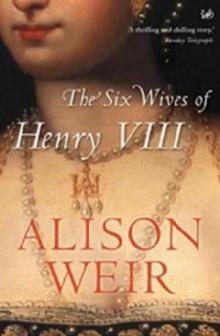 Six Wives of Henry VIII
Six Wives of Henry VIII Elizabeth of York: A Tudor Queen and Her World
Elizabeth of York: A Tudor Queen and Her World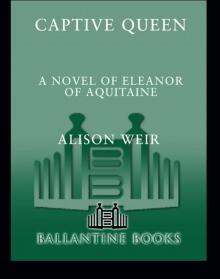 Captive Queen
Captive Queen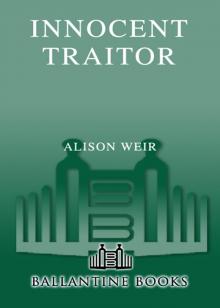 Innocent Traitor
Innocent Traitor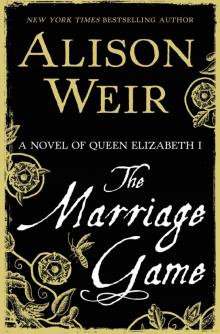 The Marriage Game
The Marriage Game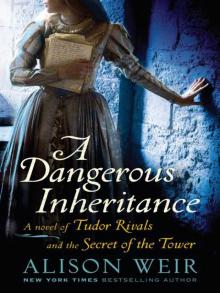 A Dangerous Inheritance
A Dangerous Inheritance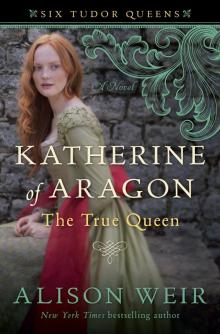 Katherine of Aragón: The True Queen
Katherine of Aragón: The True Queen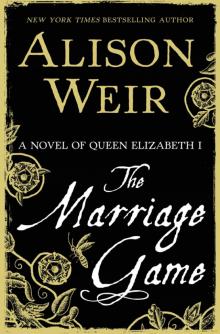 The Marriage Game: A Novel of Queen Elizabeth I
The Marriage Game: A Novel of Queen Elizabeth I Princes in the Tower
Princes in the Tower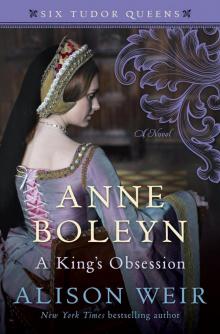 Anne Boleyn: A King's Obsession
Anne Boleyn: A King's Obsession Traitors of the Tower
Traitors of the Tower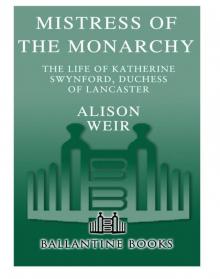 Mistress of the Monarchy: The Life of Katherine Swynford, Duchess of Lancaster
Mistress of the Monarchy: The Life of Katherine Swynford, Duchess of Lancaster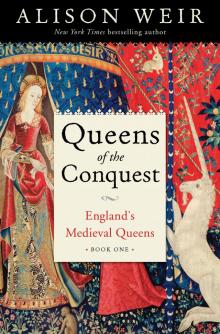 Queens of the Conquest: England’s Medieval Queens
Queens of the Conquest: England’s Medieval Queens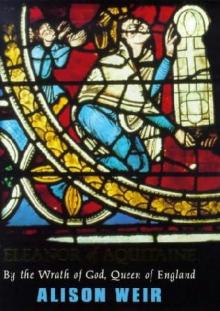 Eleanor of Aquitaine: A Life
Eleanor of Aquitaine: A Life Mary, Queen of Scots, and the Murder of Lord Darnley
Mary, Queen of Scots, and the Murder of Lord Darnley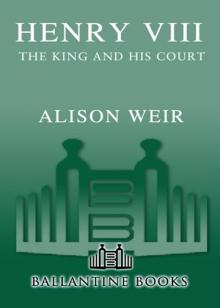 Henry VIII: The King and His Court
Henry VIII: The King and His Court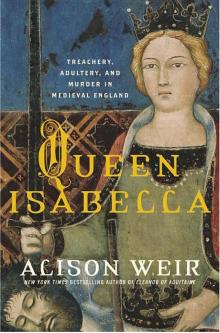 Queen Isabella: Treachery, Adultery, and Murder in Medieval England
Queen Isabella: Treachery, Adultery, and Murder in Medieval England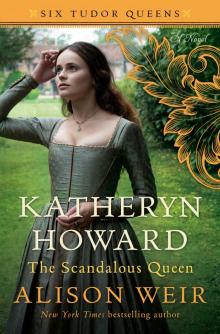 Katheryn Howard, the Scandalous Queen
Katheryn Howard, the Scandalous Queen Arthur- Prince of the Roses
Arthur- Prince of the Roses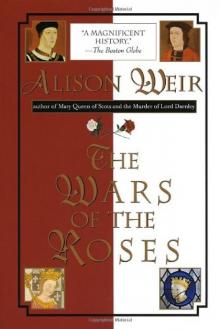 The Wars of the Roses
The Wars of the Roses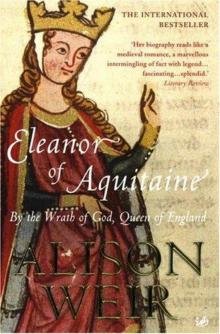 Eleanor of Aquitaine: By the Wrath of God, Queen of England
Eleanor of Aquitaine: By the Wrath of God, Queen of England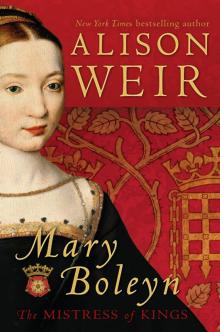 Mary Boleyn: The Great and Infamous Whore
Mary Boleyn: The Great and Infamous Whore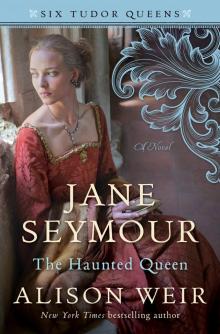 Jane Seymour: The Haunted Queen
Jane Seymour: The Haunted Queen Anna of Kleve, the Princess in the Portrait
Anna of Kleve, the Princess in the Portrait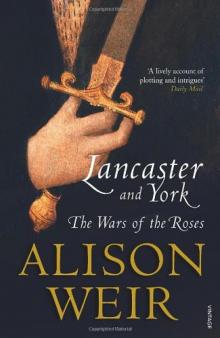 Lancaster and York: The Wars of the Roses
Lancaster and York: The Wars of the Roses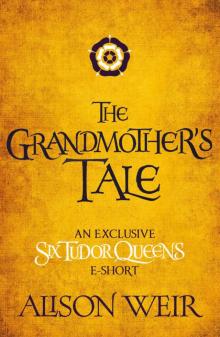 The Grandmother's Tale
The Grandmother's Tale The Princess of Scotland (Six Tudor Queens #5.5)
The Princess of Scotland (Six Tudor Queens #5.5)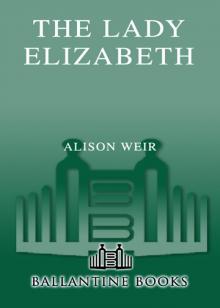 The Lady Elizabeth
The Lady Elizabeth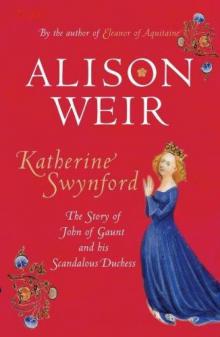 Katherine Swynford: The Story of John of Gaunt and His Scandalous Duchess
Katherine Swynford: The Story of John of Gaunt and His Scandalous Duchess The Curse of the Hungerfords
The Curse of the Hungerfords The Lost Tudor Princess: The Life of Lady Margaret Douglas
The Lost Tudor Princess: The Life of Lady Margaret Douglas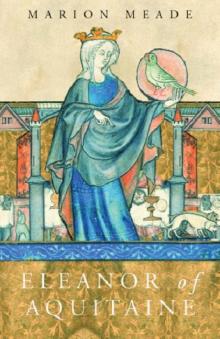 Eleanor of Aquitaine
Eleanor of Aquitaine Mistress of the Monarchy
Mistress of the Monarchy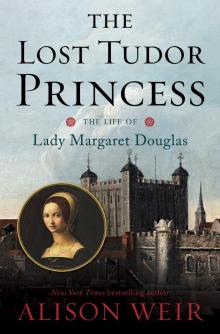 The Lost Tudor Princess
The Lost Tudor Princess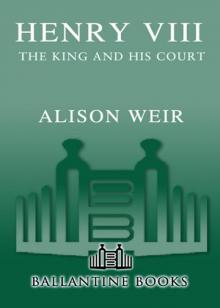 Henry VIII
Henry VIII Anne Boleyn, a King's Obsession
Anne Boleyn, a King's Obsession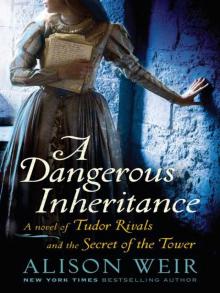 A Dangerous Inheritance: A Novel of Tudor Rivals and the Secret of the Tower
A Dangerous Inheritance: A Novel of Tudor Rivals and the Secret of the Tower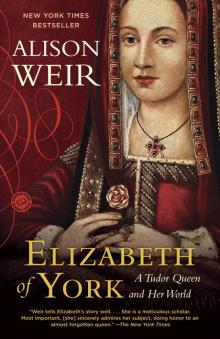 Elizabeth of York
Elizabeth of York Katherine of Aragon, the True Queen
Katherine of Aragon, the True Queen Katherine Swynford
Katherine Swynford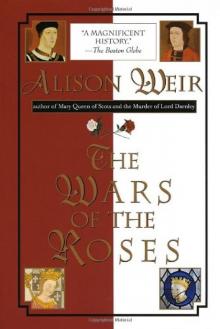 Wars of the Roses
Wars of the Roses Queens of the Conquest
Queens of the Conquest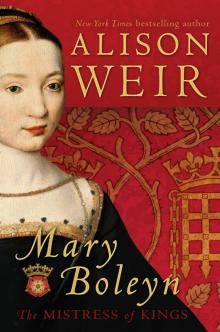 Mary Boleyn
Mary Boleyn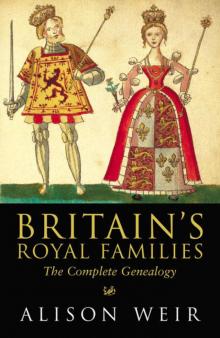 Britain's Royal Families
Britain's Royal Families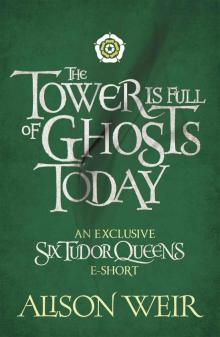 The Tower Is Full of Ghosts Today
The Tower Is Full of Ghosts Today Life of Elizabeth I
Life of Elizabeth I Anne Boleyn A King's Obssession
Anne Boleyn A King's Obssession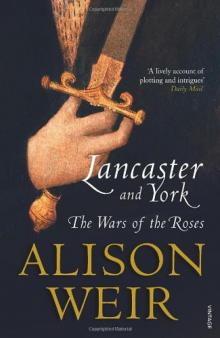 Lancaster and York
Lancaster and York Jane Seymour, the Haunted Queen
Jane Seymour, the Haunted Queen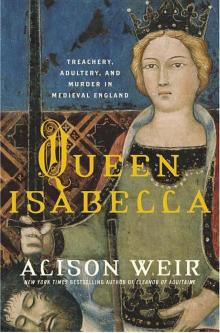 Queen Isabella
Queen Isabella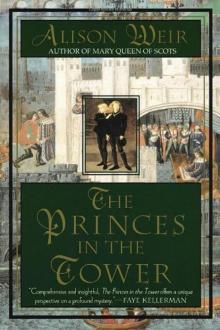 The princes in the tower
The princes in the tower